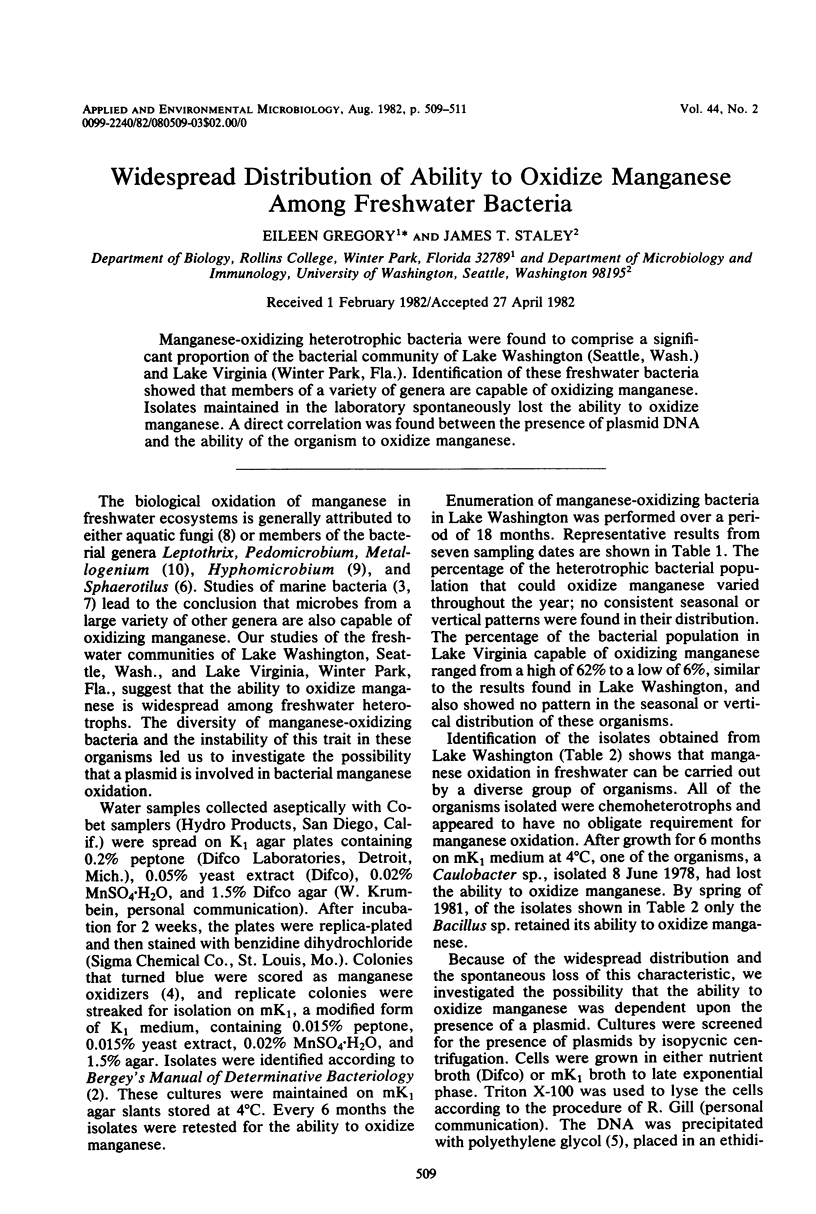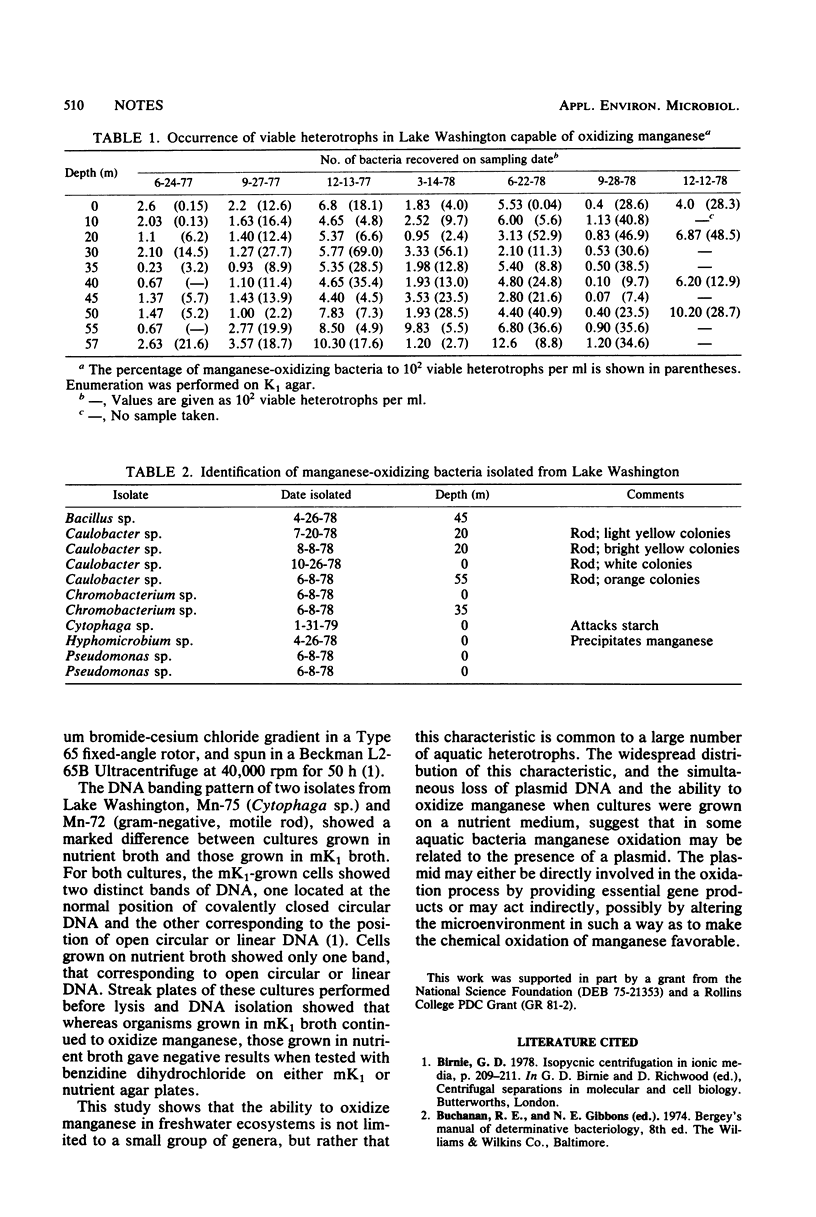Abstract
Manganese-oxidizing heterotrophic bacteria were found to comprise a significant proportion of the bacterial community of Lake Washington (Seattle, Wash.) and Lake Virginia (Winter Park, Fla.). Identification of these freshwater bacteria showed that members of a variety of genera are capable of oxidizing manganese. Isolates maintained in the laboratory spontaneously lost the ability to oxidize manganese. A direct correlation was found between the presence of plasmid DNA and the ability of the organism to oxidize manganese.
Full text
PDF


Selected References
These references are in PubMed. This may not be the complete list of references from this article.
- Ehrlich H. L. Bacteriology of Manganese Nodules: I. Bacterial Action on Manganese in Nodule Enrichments. Appl Microbiol. 1963 Jan;11(1):15–19. doi: 10.1128/am.11.1.15-19.1963. [DOI] [PMC free article] [PubMed] [Google Scholar]
- Humphreys G. O., Willshaw G. A., Anderson E. S. A simple method for the preparation of large quantities of pure plasmid DNA. Biochim Biophys Acta. 1975 Apr 2;383(4):457–463. doi: 10.1016/0005-2787(75)90318-4. [DOI] [PubMed] [Google Scholar]
- Johnson A. H., Stokes J. L. Managanese oxidation by Sphaerotilus discophorus. J Bacteriol. 1966 Apr;91(4):1543–1547. doi: 10.1128/jb.91.4.1543-1547.1966. [DOI] [PMC free article] [PubMed] [Google Scholar]
- Tyler P. A. Hyphomicrobia and the oxidation of manganesse in aquatic ecosystems. Antonie Van Leeuwenhoek. 1970;36(4):567–578. doi: 10.1007/BF02069059. [DOI] [PubMed] [Google Scholar]


